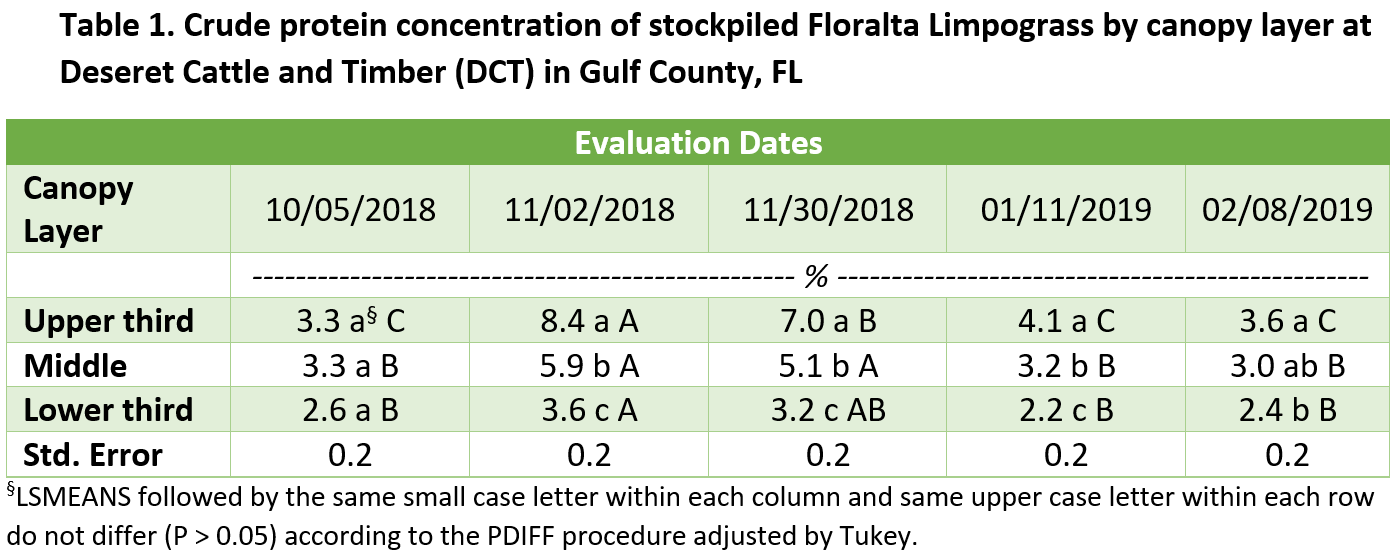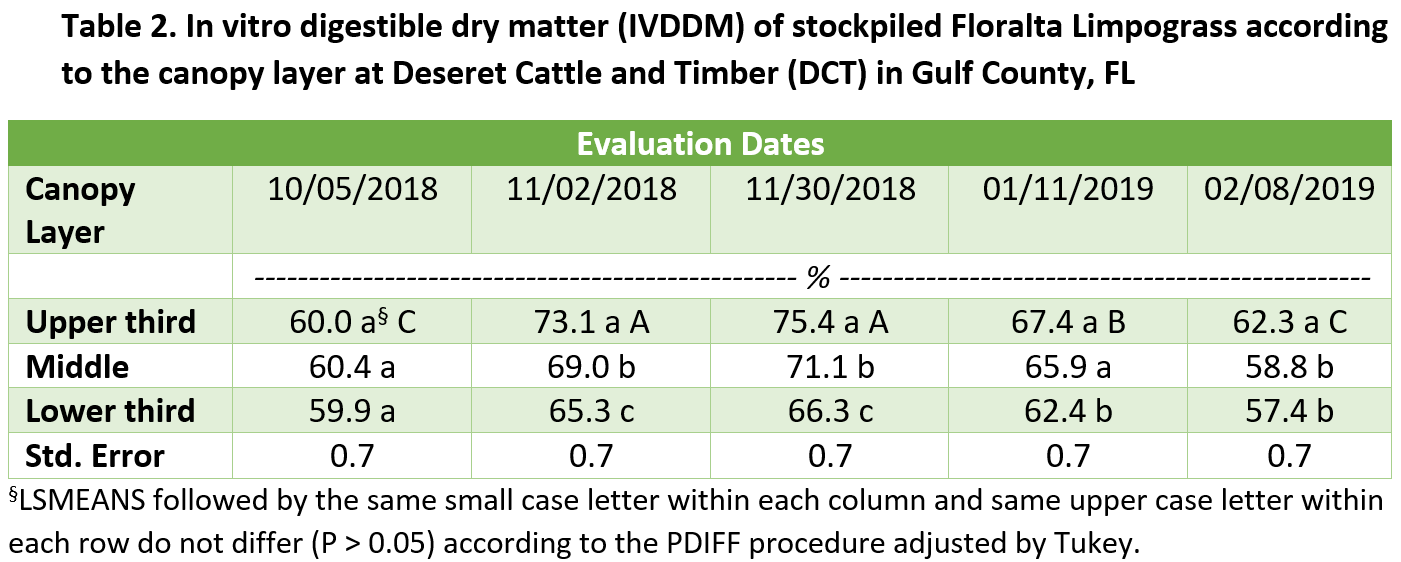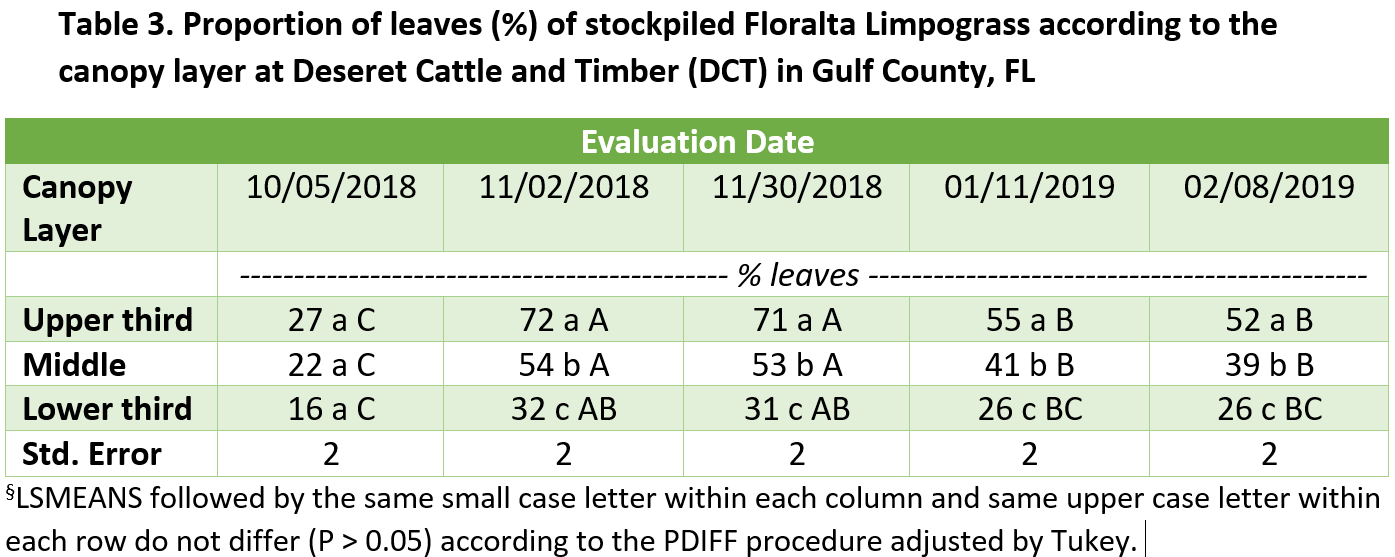Jose Dubeux, Luana Dantas, Vanessa Longhini, Erick Santos, Flavia van Cleef, David Jaramillo, UF/IFAS North Florida Research and Education Center
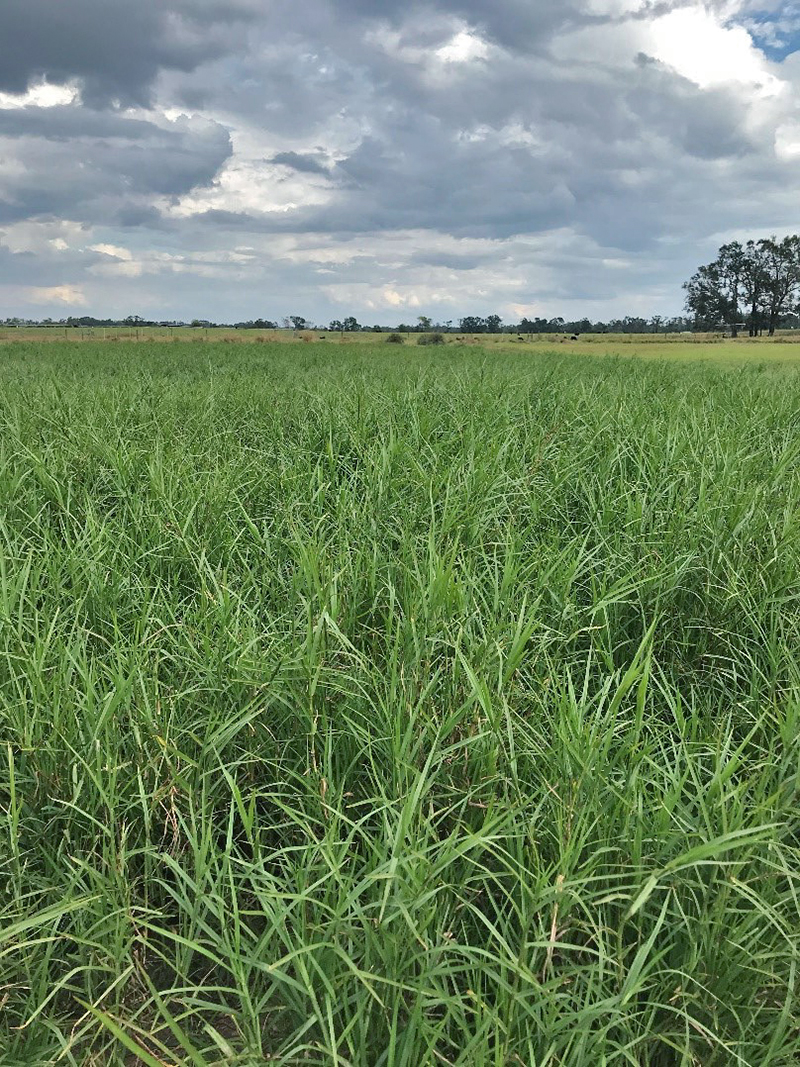
Figure 1. ‘Gibtuck’ limpograss in Marianna, FL. Picture taken in 14 Oct. 2019. Photo credit: Jose Dubeux, UF/IFAS
–
Introduction
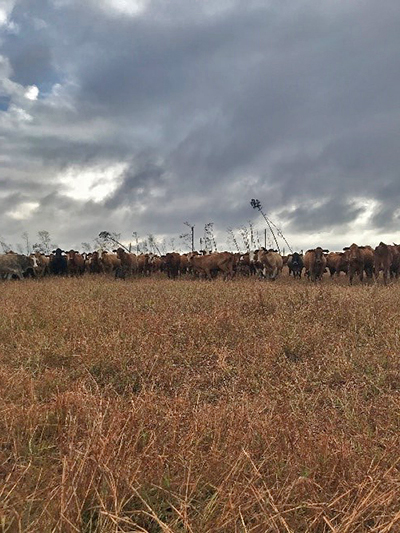
Figure 2. Stockpiled Floralta limpograss at Deseret Cattle and Timber Ranch in North Florida; Jan. 2019. Photo credit: Jose Dubeux
Limpograss (Hemarthria altissima) has been successfully adopted by South Florida livestock producers. This unique grass grows well in flatwood soils and maintains its digestibility longer through the season than other warm-season grasses (e.g., bahiagrass and bermudagrass), making it a good candidate for stockpiling. Limpograss is also less sensitive to daylength than other grasses, growing during the cool-season, especially in mild-winters in South Florida (Figure 1). After a frost, limpograss will usually be one of the first warm-season grasses to initiate the regrowth.
The potential of limpograss in the Florida Panhandle, however, has not been fully assessed. Although limpograss collections have been established in the Panhandle since 2005, a comprehensive evaluation including biomass productivity and nutritive value has not been performed in larger paddocks with grazing animals. The persistence of limpograss throughout these years, however, shows the possibility of growing this species in the Panhandle, despite the cooler temperatures compared to South Florida. Along the Gulf coast, there are vast areas that could potentially be used for limpograss production. One of the concerns associated with growing limpograss in this region is the shorter growing season and earlier first frost, as compared to South Florida. This article shares preliminary data from an on-farm study at Deseret Cattle and Timber Company (Gulf County) that indicates the potential to use stockpiled limpograss in this region (Figure 2).
Approach
Floralta Limpograss located at Deseret Ranch in Gulf County was divided in 12 paddocks, with 3 acres per paddock. Soil tests were performed to develop a fertilization protocol. The plots were mowed on September 21, 2018. After mowing, paddocks were fertilized with 229 lb/acre of 26-0-9-4 and the fertilizer sources were ammonium nitrate, ammonium sulfate, and muriate of potash.
Limpograss canopy structure was characterized at the beginning of the stockpiling and through the grazing period. The goal was to provide an accurate estimate of limpograss canopy structure and nutritive value. There were 50 disk heights and 50 ruler measurements recorded from each paddock on each evaluation date, from October 2018 to February 2019. Hand-plucked samples were also collected to characterize the canopy layers. Canopy were divided into three equal layers (upper, middle, lower). Canopy height ranged from 9.8 inches in 10/5/2018 to 14.8 inches in 1/11/2019. In the laboratory, leaves and stems were separated within each layer. Samples were oven-dried (131°F) for 48 hours and analyzed for nitrogen (N) concentration using the Dumas combustion method.
Nutritive value
Crude protein (CP) concentration of stockpiled limpograss was greater for the upper layer and lowest for the bottom layer in three out of four evaluations (Table 1). This indicates the need to manage stockpiled limpograss using the upper layer of the canopy in order to improve livestock nutrition.
In vitro digestible dry matter (IVDDM) of limpograss was generally adequate and varied across canopy layers, with greater IVDDM observed for the top layers, corroborating the crude protein data (Table 2). These results indicate the potential of limpograss as a stockpiled forage in North Florida, providing that protein be supplemented to the herd.
Leaf proportion according to the canopy layer varied with evaluation date, but in three out of four evaluations there was greater leaf proportion in the upper stratum of the canopy and the lowest proportion at the lower stratum (Table 3). That partially explains the greater CP concentration in the upper layer.
Limpograss leaves have greater crude protein than stems, however, unlike other warm-season perennial grasses, limpograss has similar digestibility between stem and leaf (Figure 3). This helps to maintain digestibility even with greater stem proportion. Even after freezing temperatures, limpograss was still 60% digestibile, which is excellent considering the low inputs in the system. Crude protein, however, is low. Livestock grazing stockpiled limpograss will require protein supplementation, and depending on the target performance, could require energy supplementation as well.
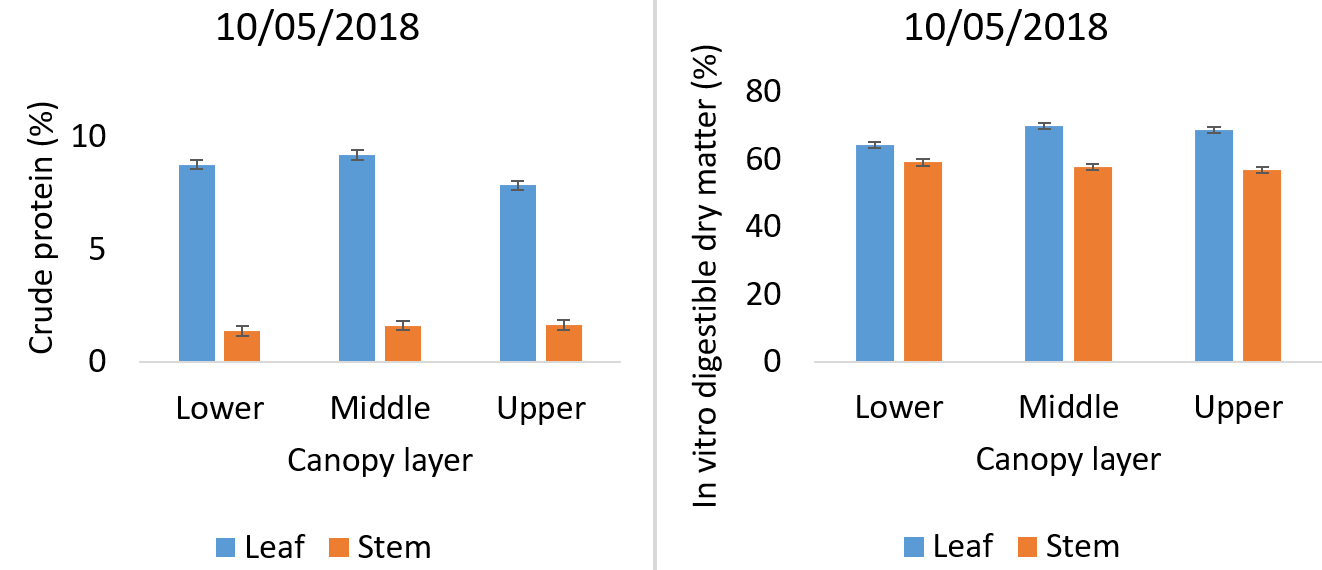
Figure 3. Crude protein and in vitro digestibility of stockpiled Floralta Limpograss in North Florida.
–
Summary
Floralta Limpograss has great digestibility but low crude protein, and this composition varies with canopy layer and plant fraction through the season. The upper third of the canopy had greater digestibility and crude protein than the lower third. These results are similar to what has been observed in South Florida, but this is the first time that has been evaluated in the Panhandle. Supplementation strategies must focus on protein and perhaps energy supplementation for livestock with greater nutrient requirements such as first-calf heifers. Intake measurement must also be addressed in future research efforts. These preliminary results shared in this article only represent one year of data from 2018-19. Data is currently being collected to compare 2019-20 with the previous results. Seasonal variation is expected due to variability of rainfall, temperatures, and other environmental factors.
Acknowledgements: This research was funded by the Cattle Enhancement Board
–
For more information on Limpograss as Forage, use the following links:
Limpograss: Overview and Management
Weed Management in Limpograss
Limpograss: A Potential Forage Stockpiling Option for North Florida
Two New Limpograss Varieties Released
- 2025 UF/IFAS Forage Legume Conference – May 1 - March 28, 2025
- How are My Cool-season Forages Recovering from the Snowfall and Low Temperatures? - January 31, 2025
- Integrated Crop-Livestock Systems Improve Soil Health - July 26, 2024

